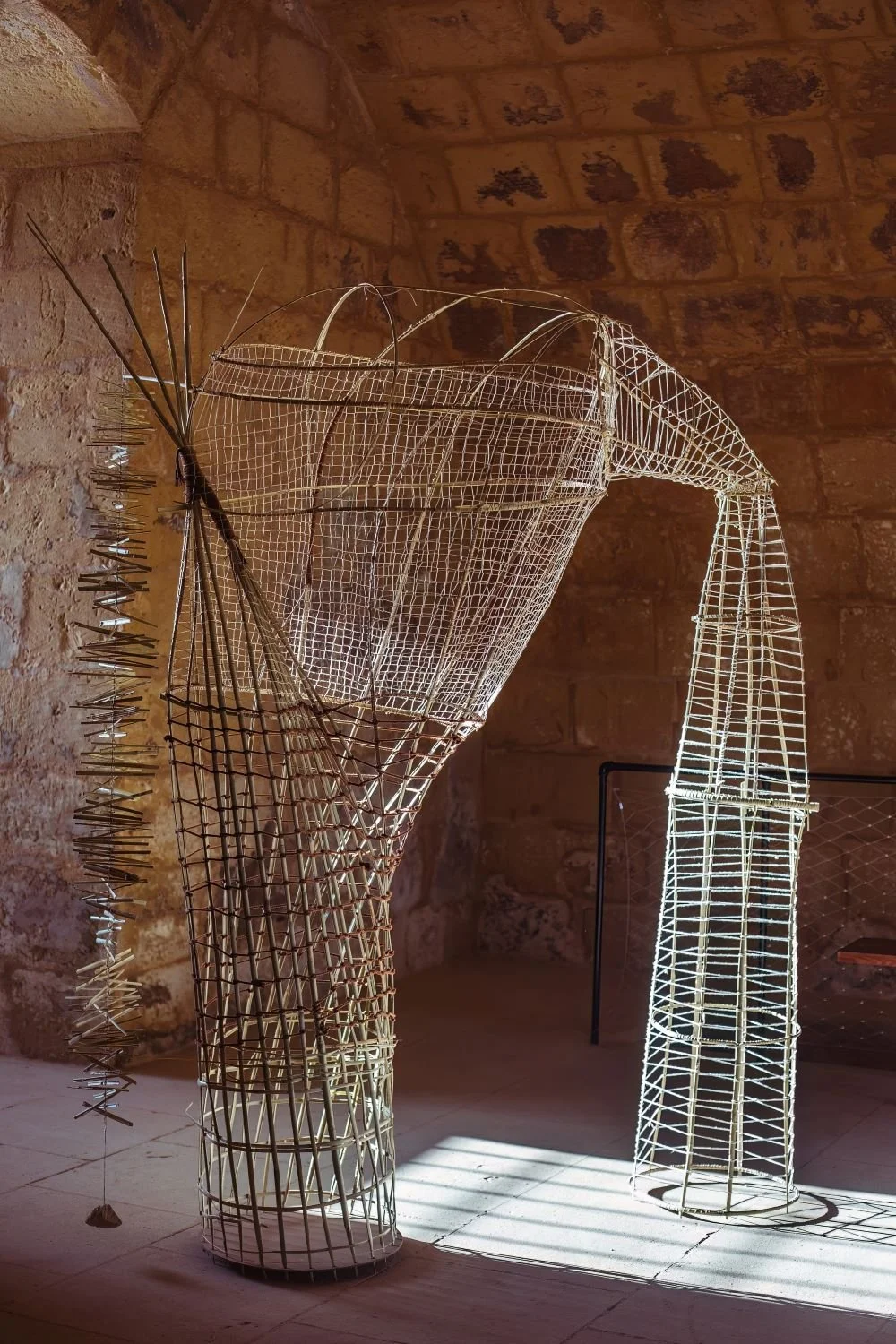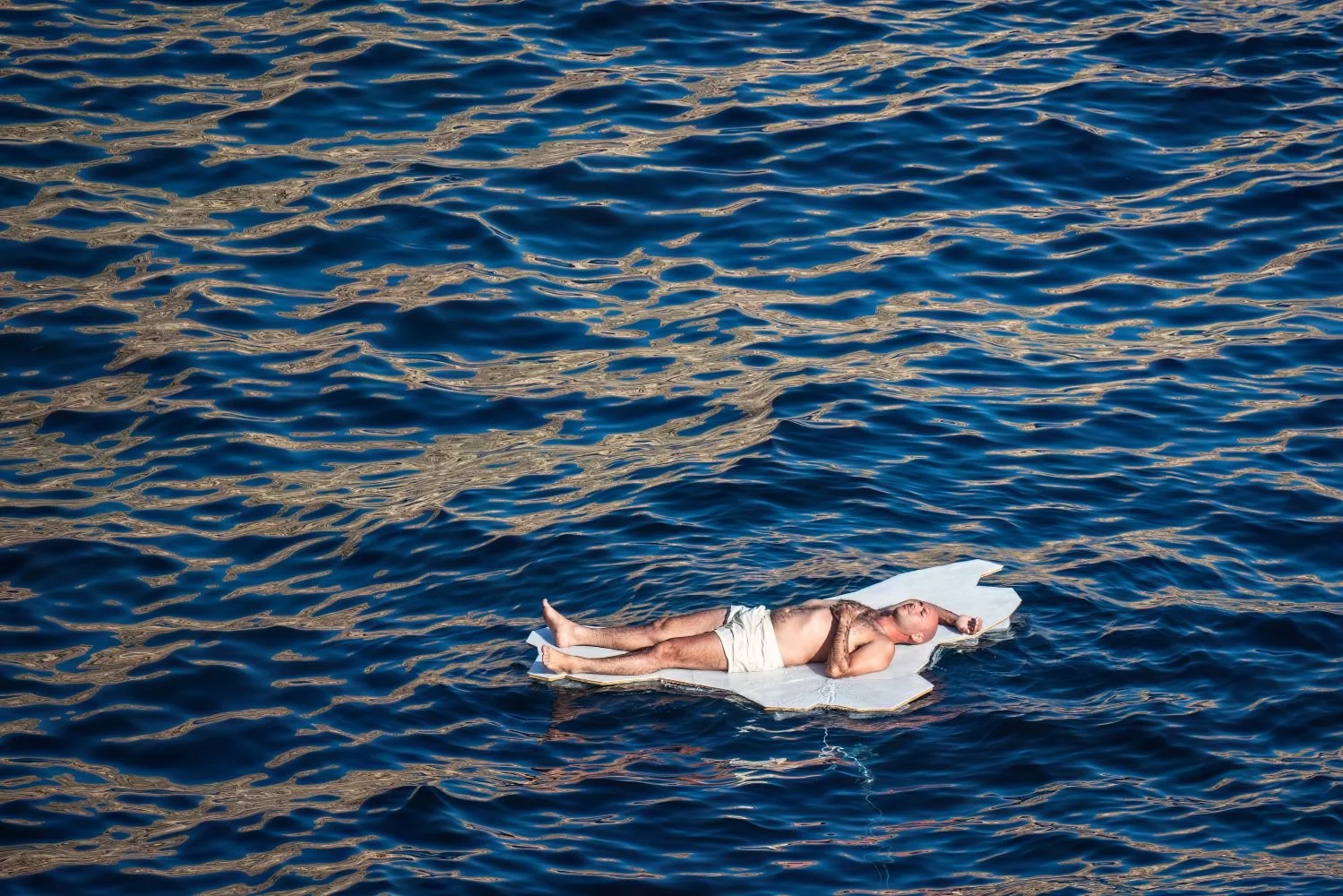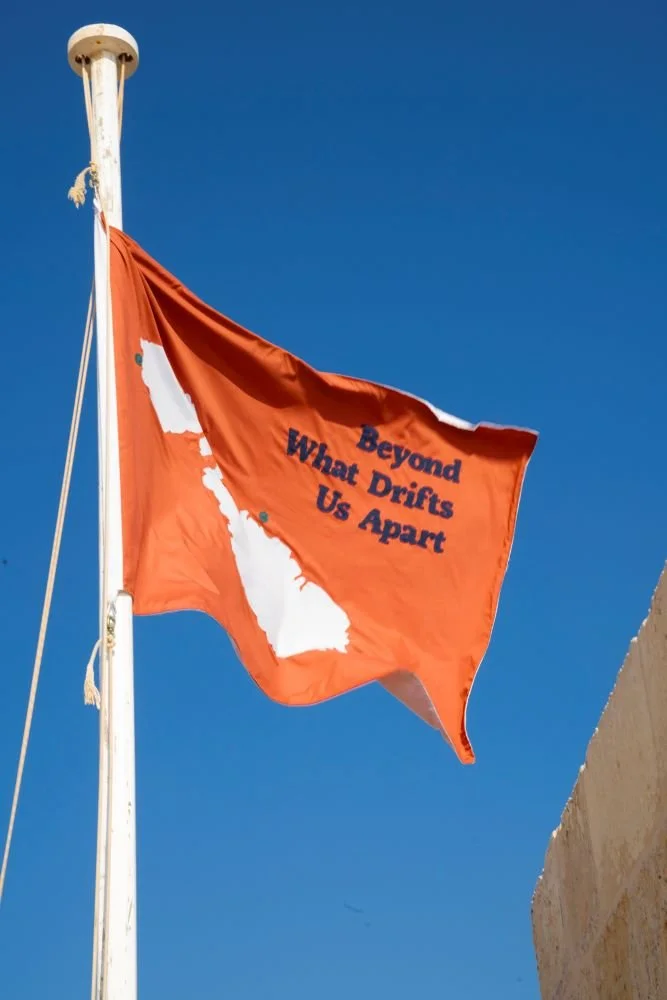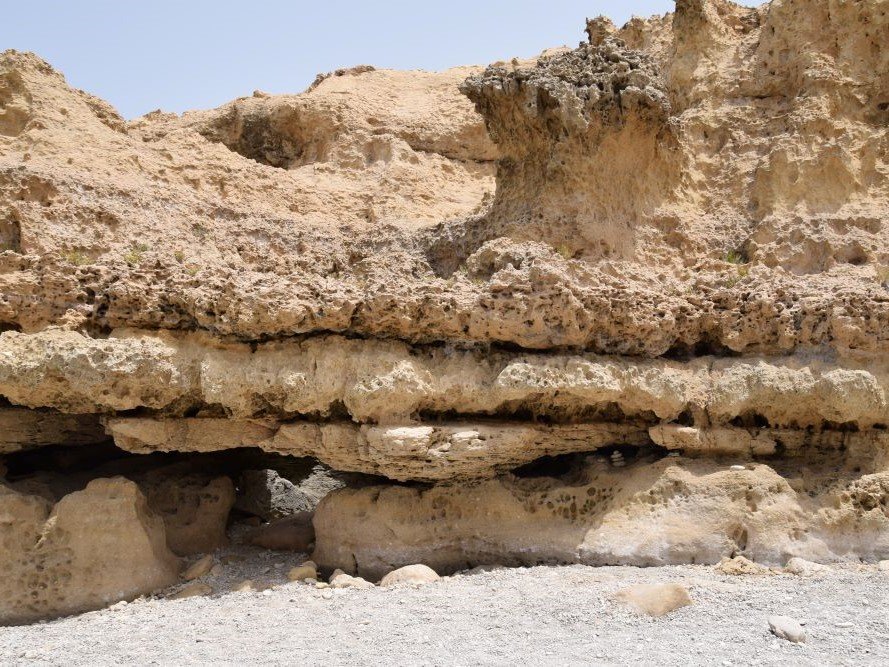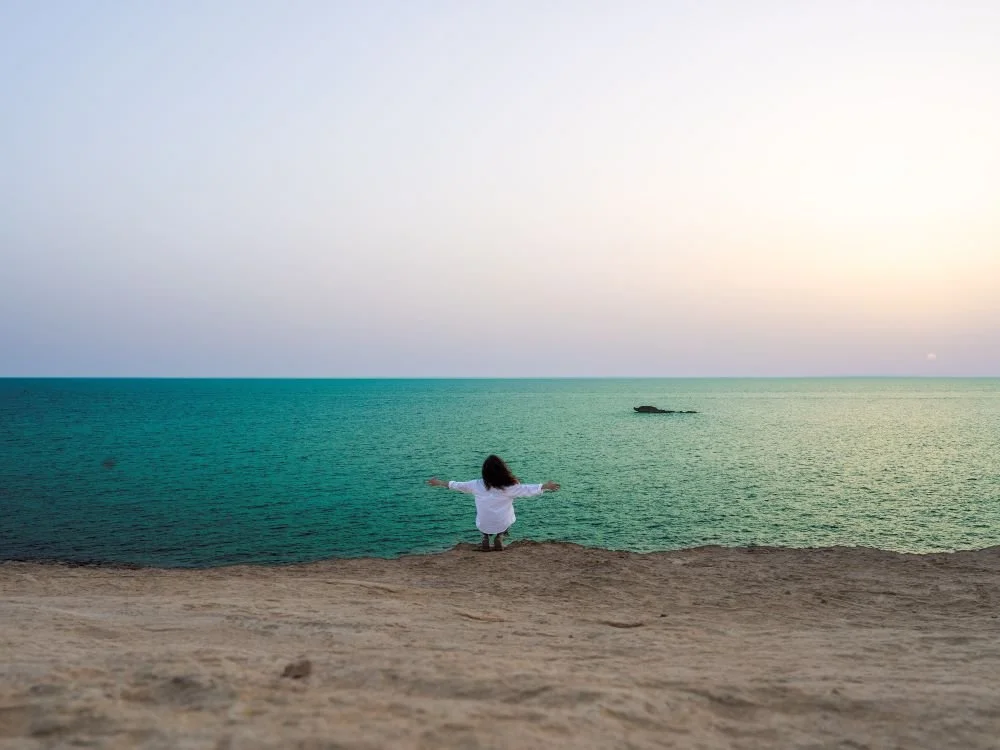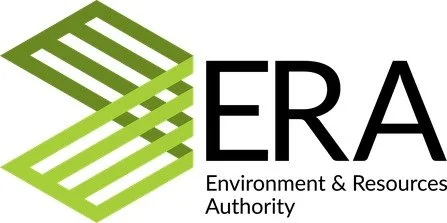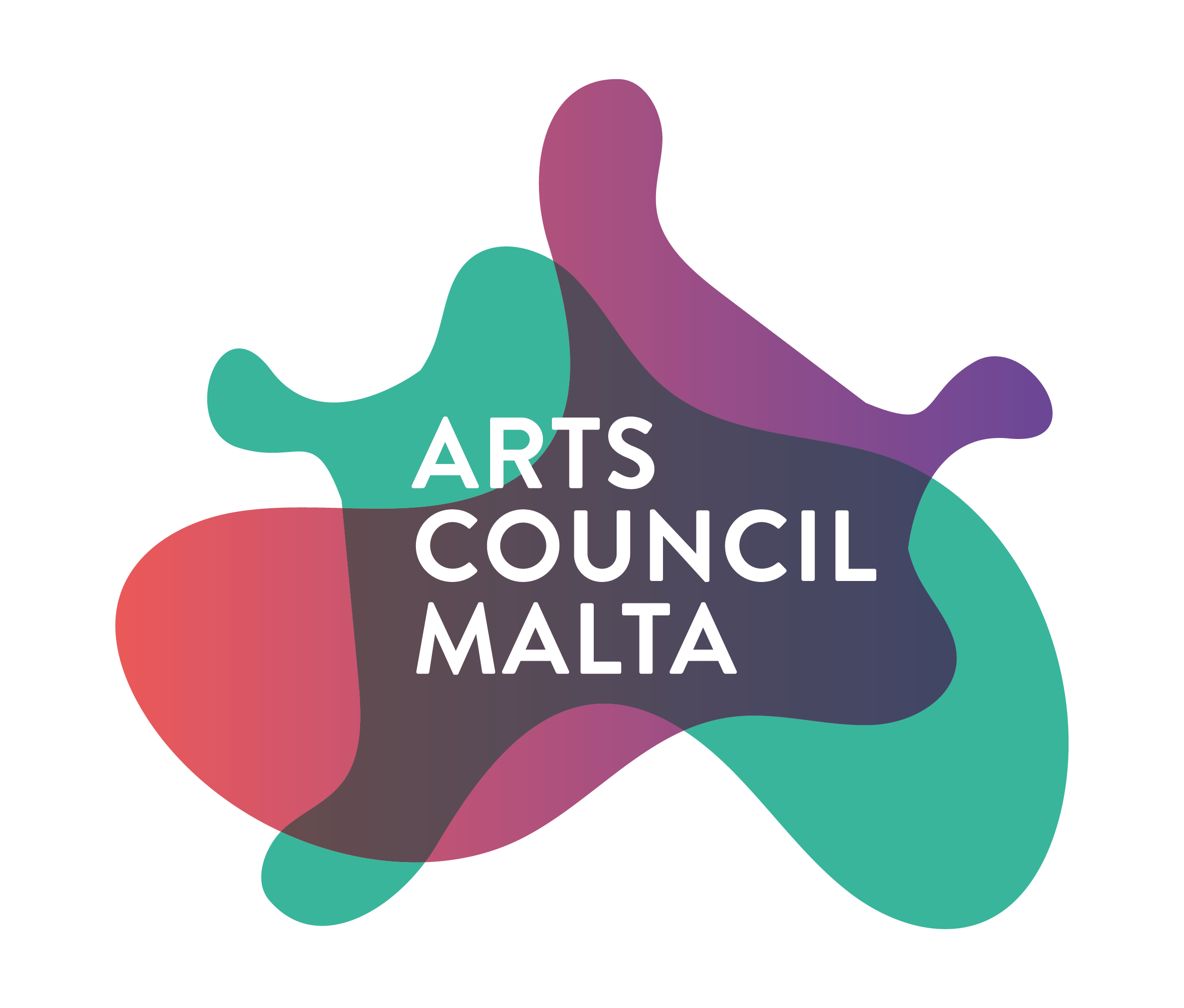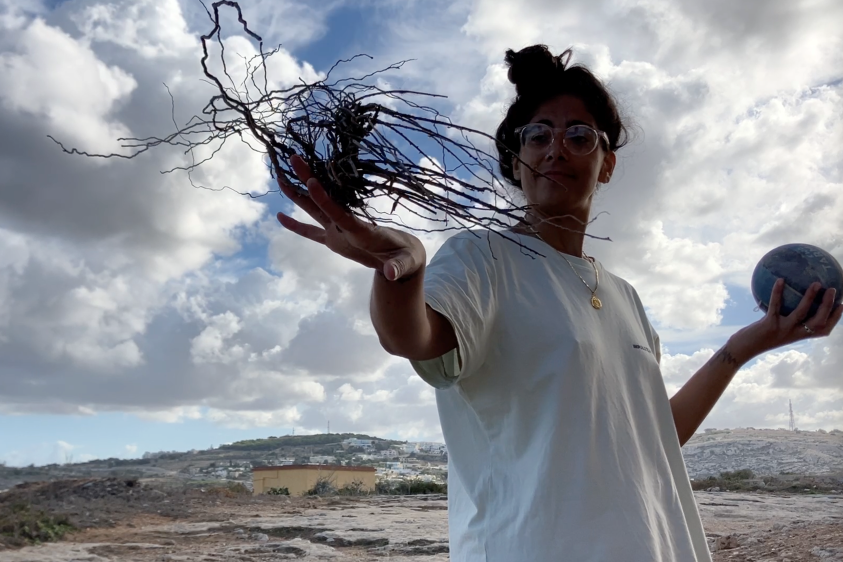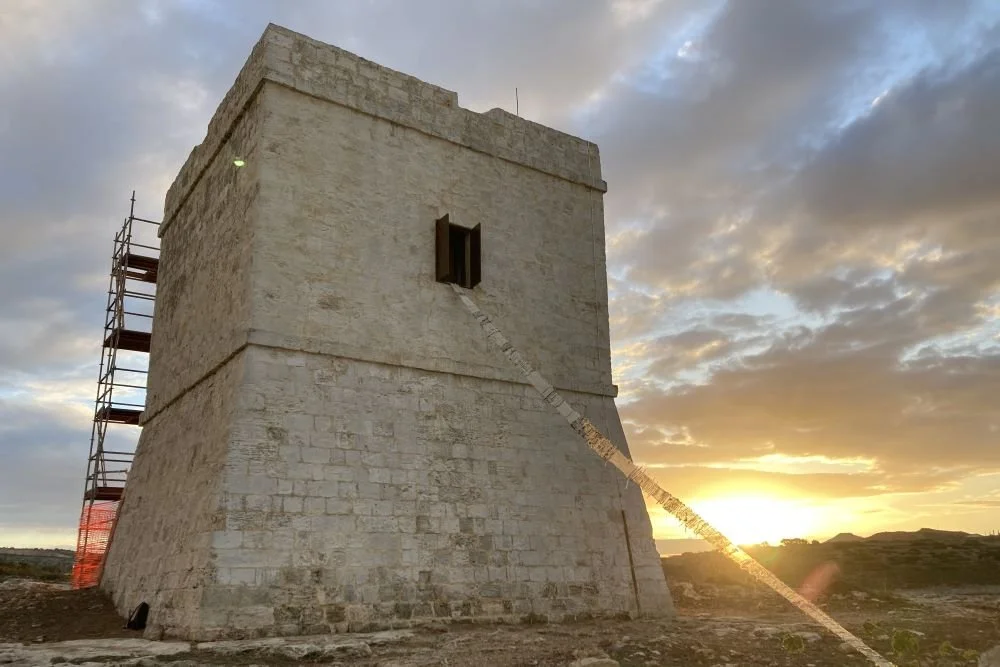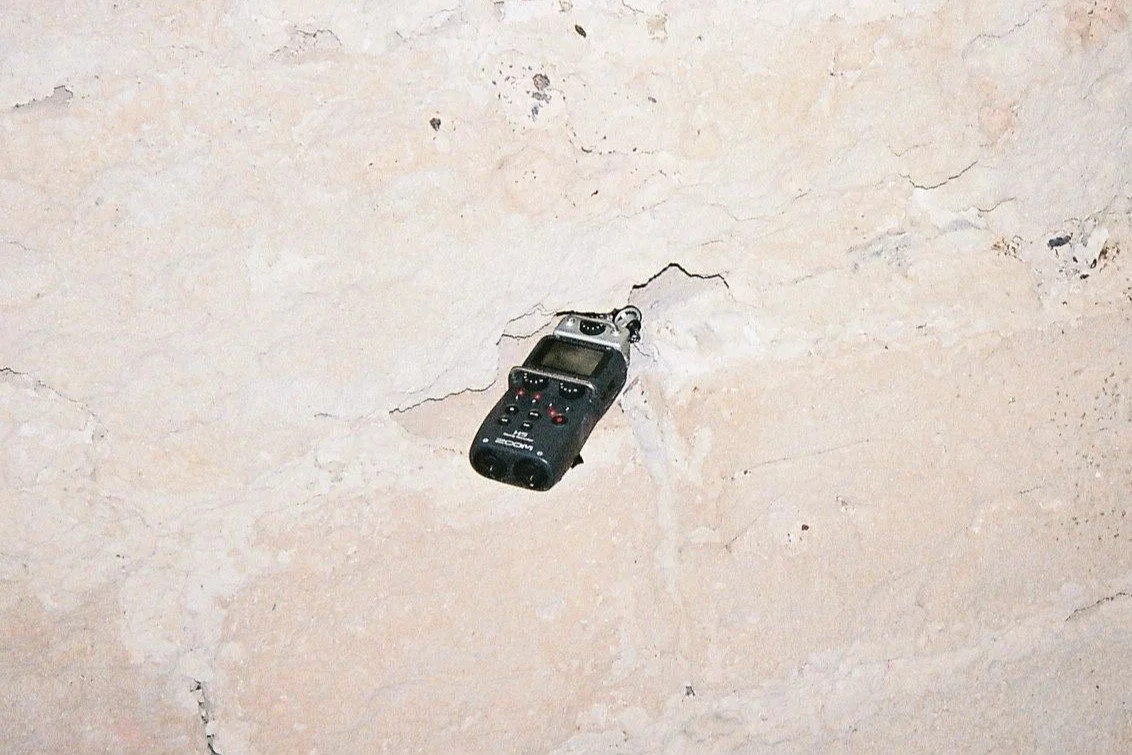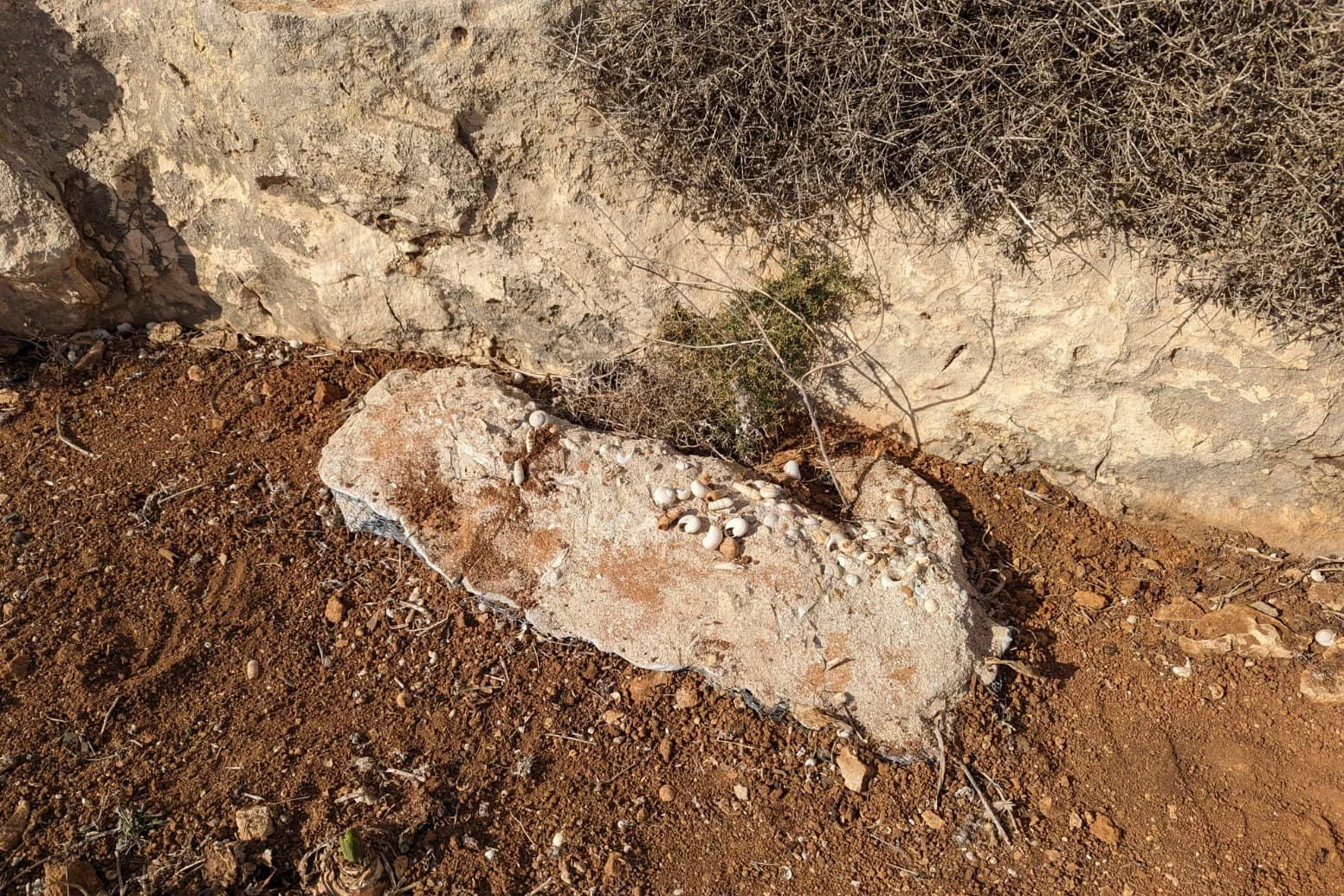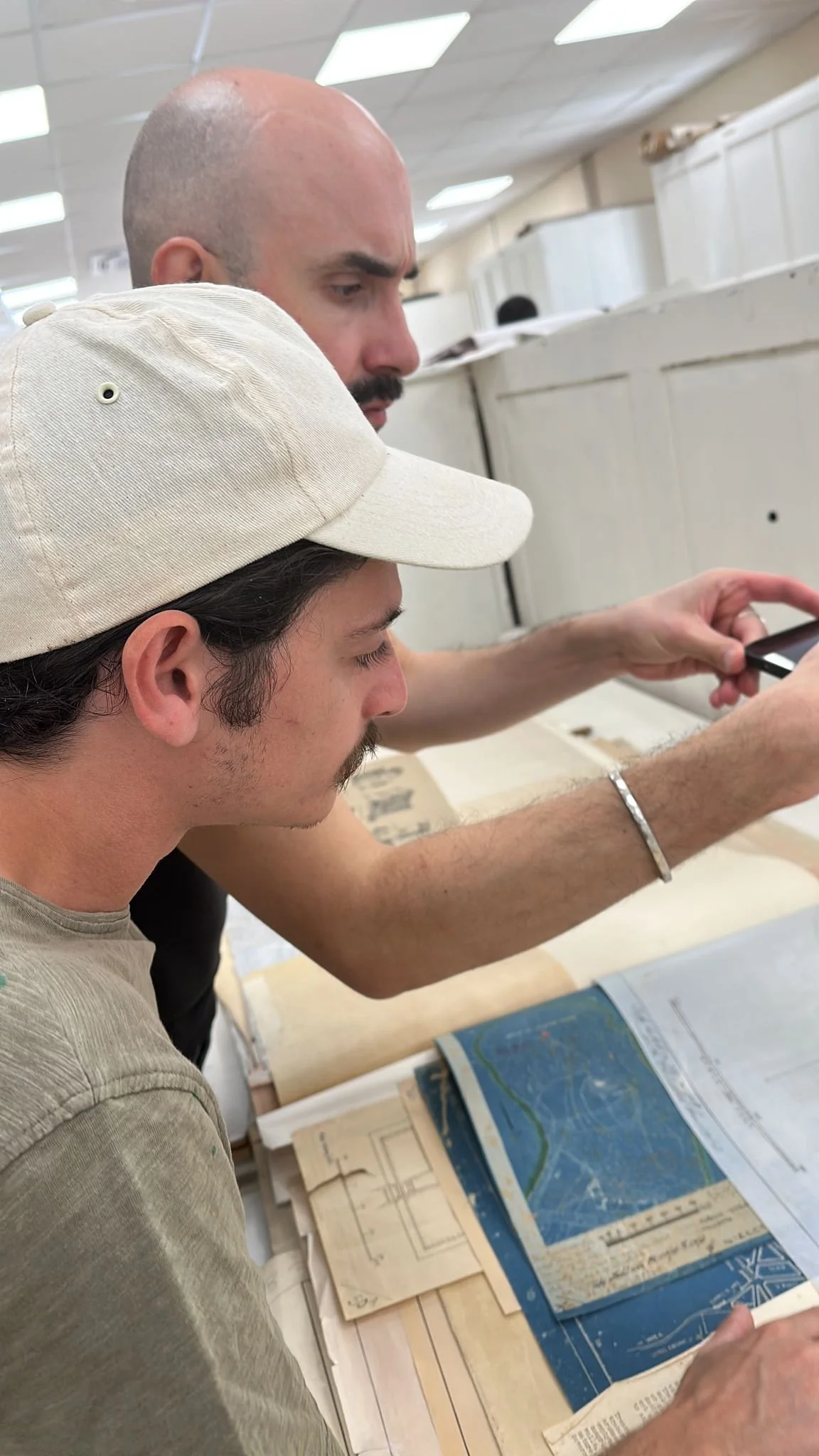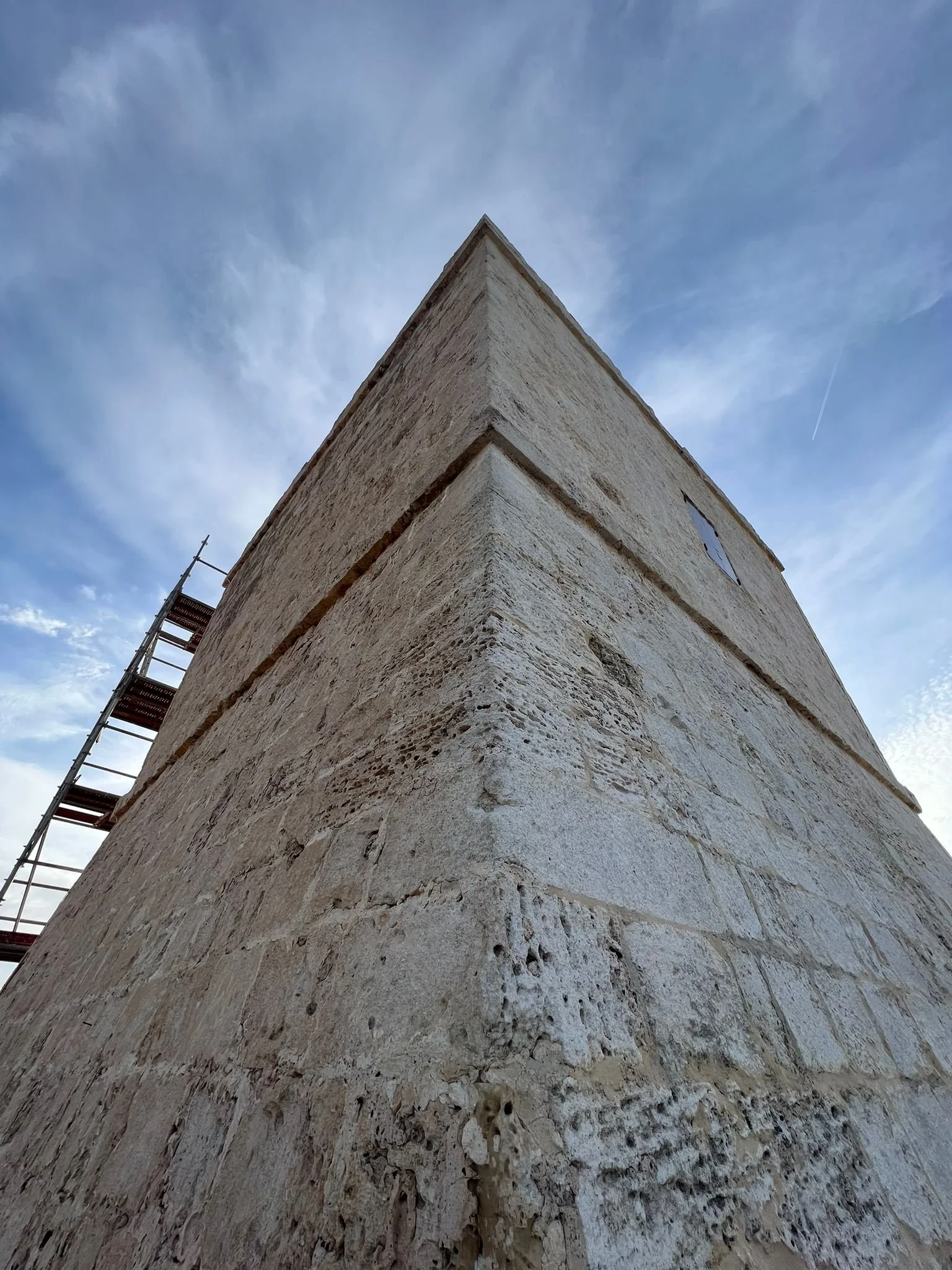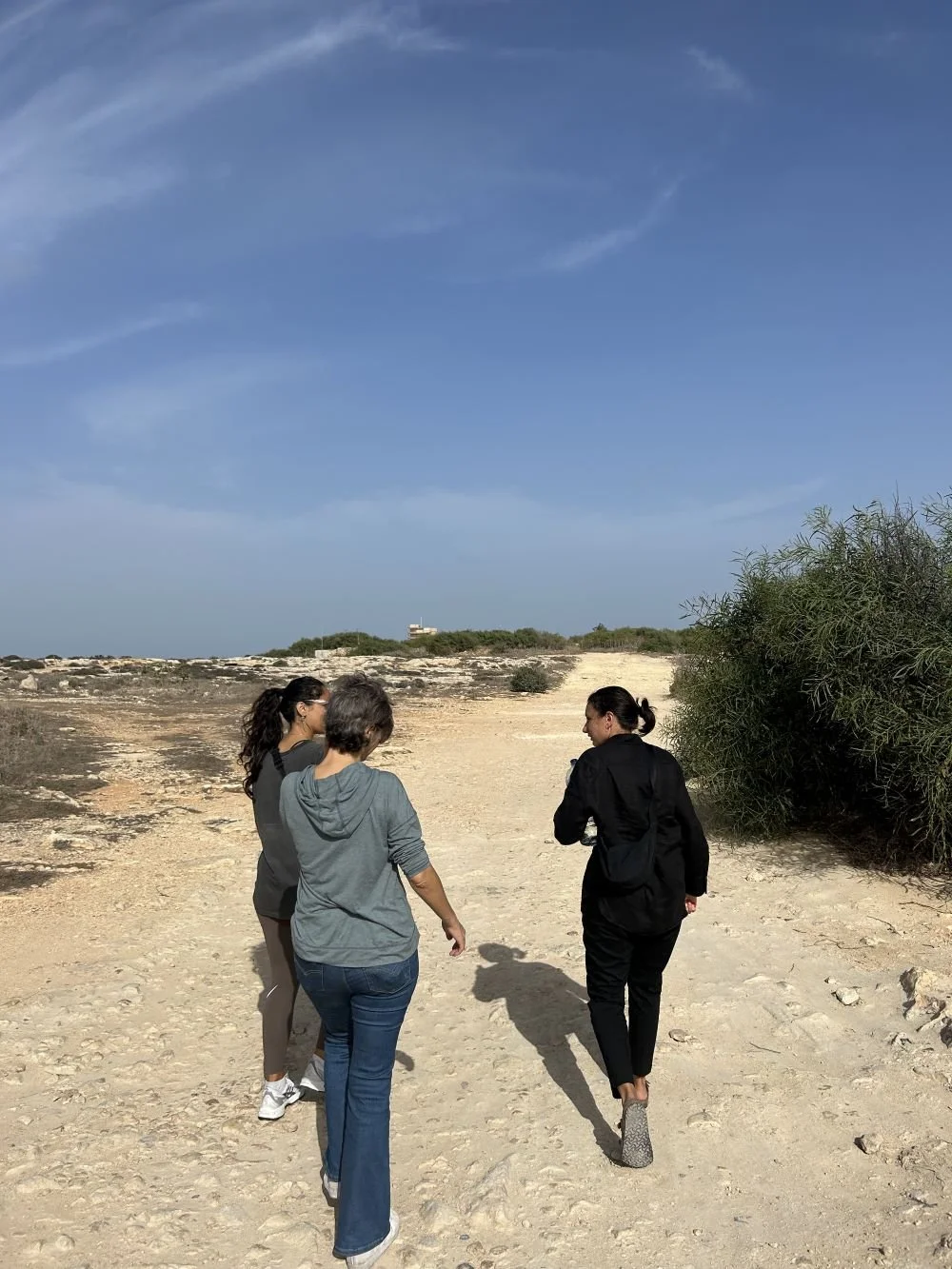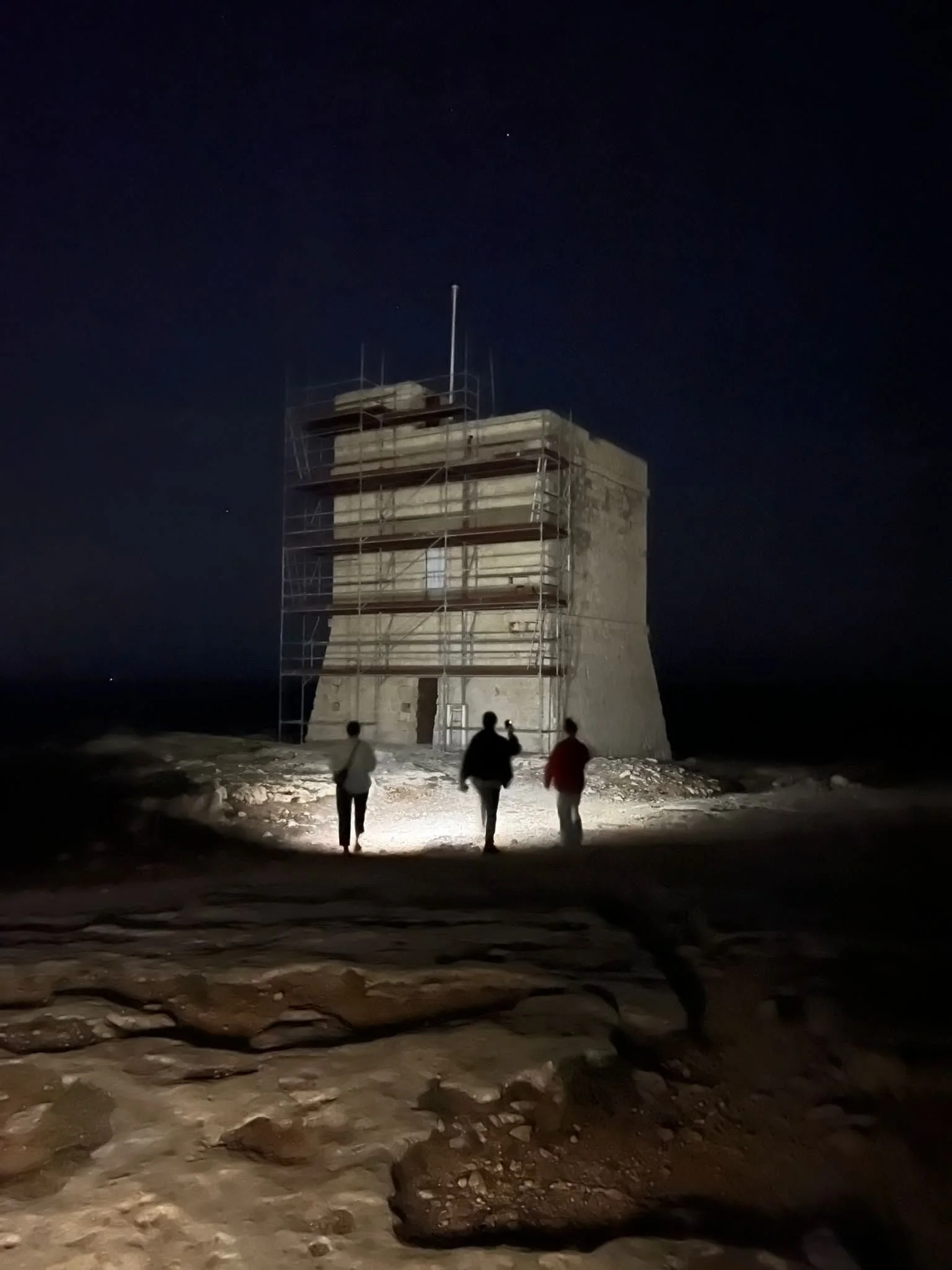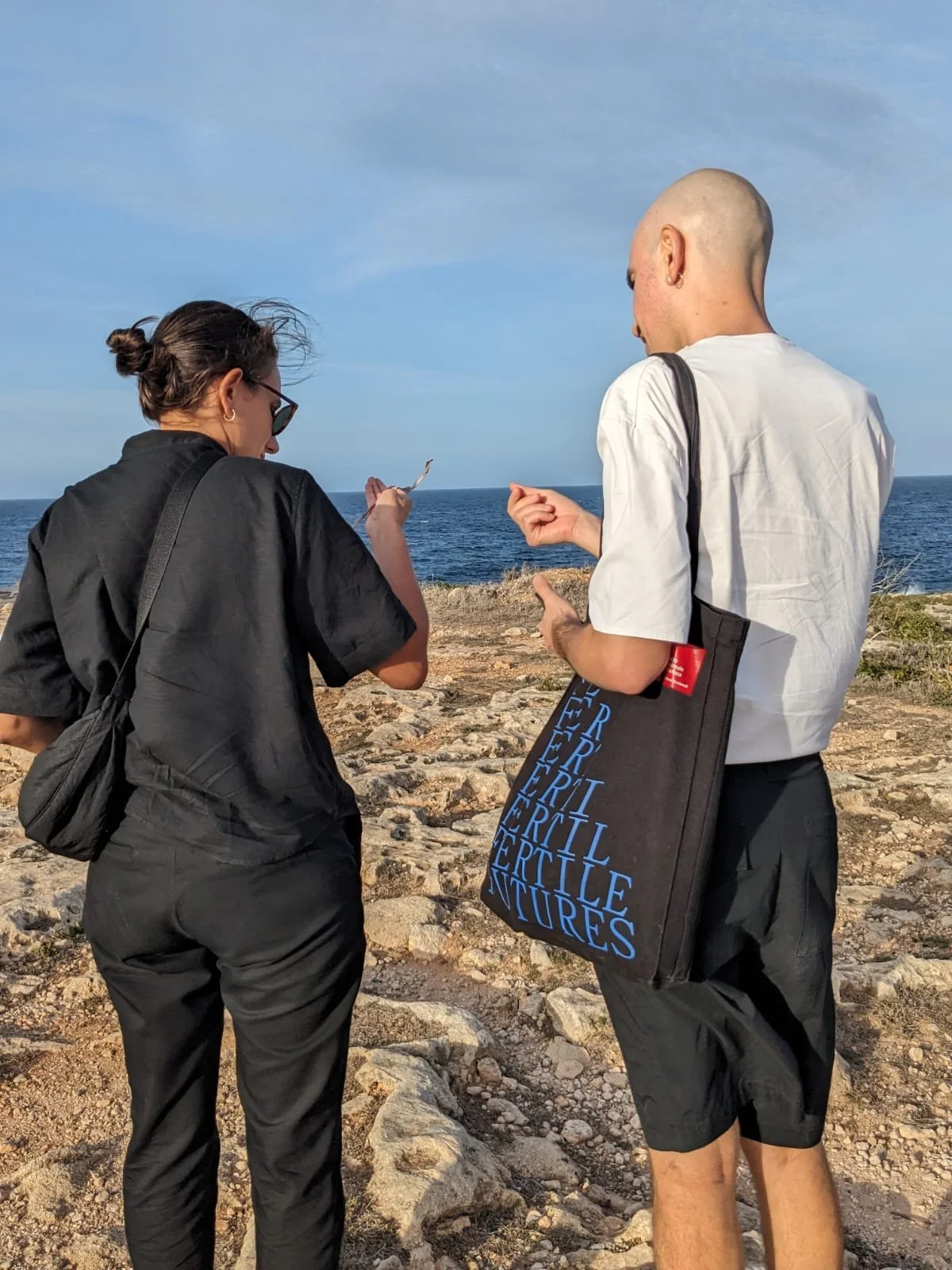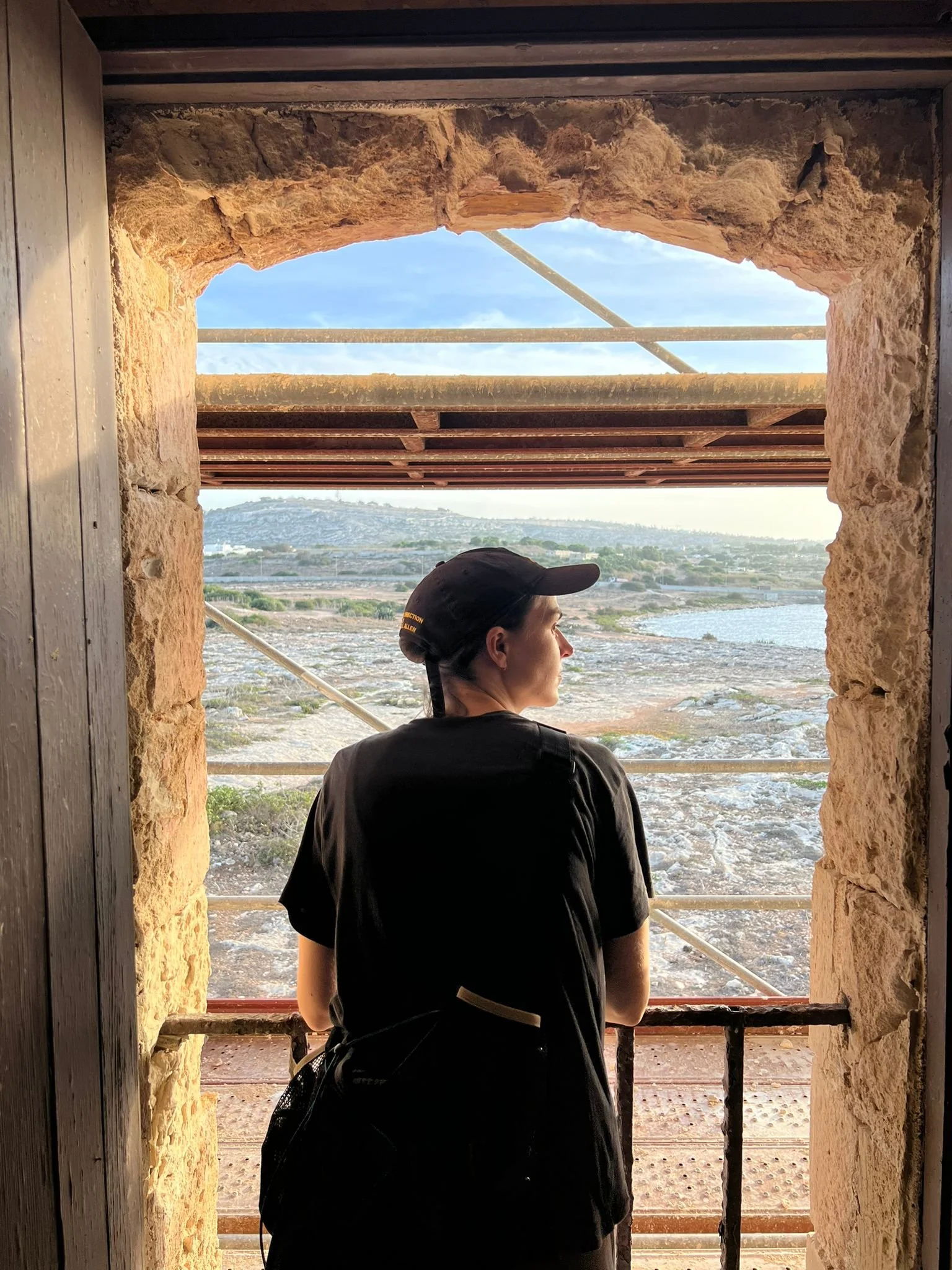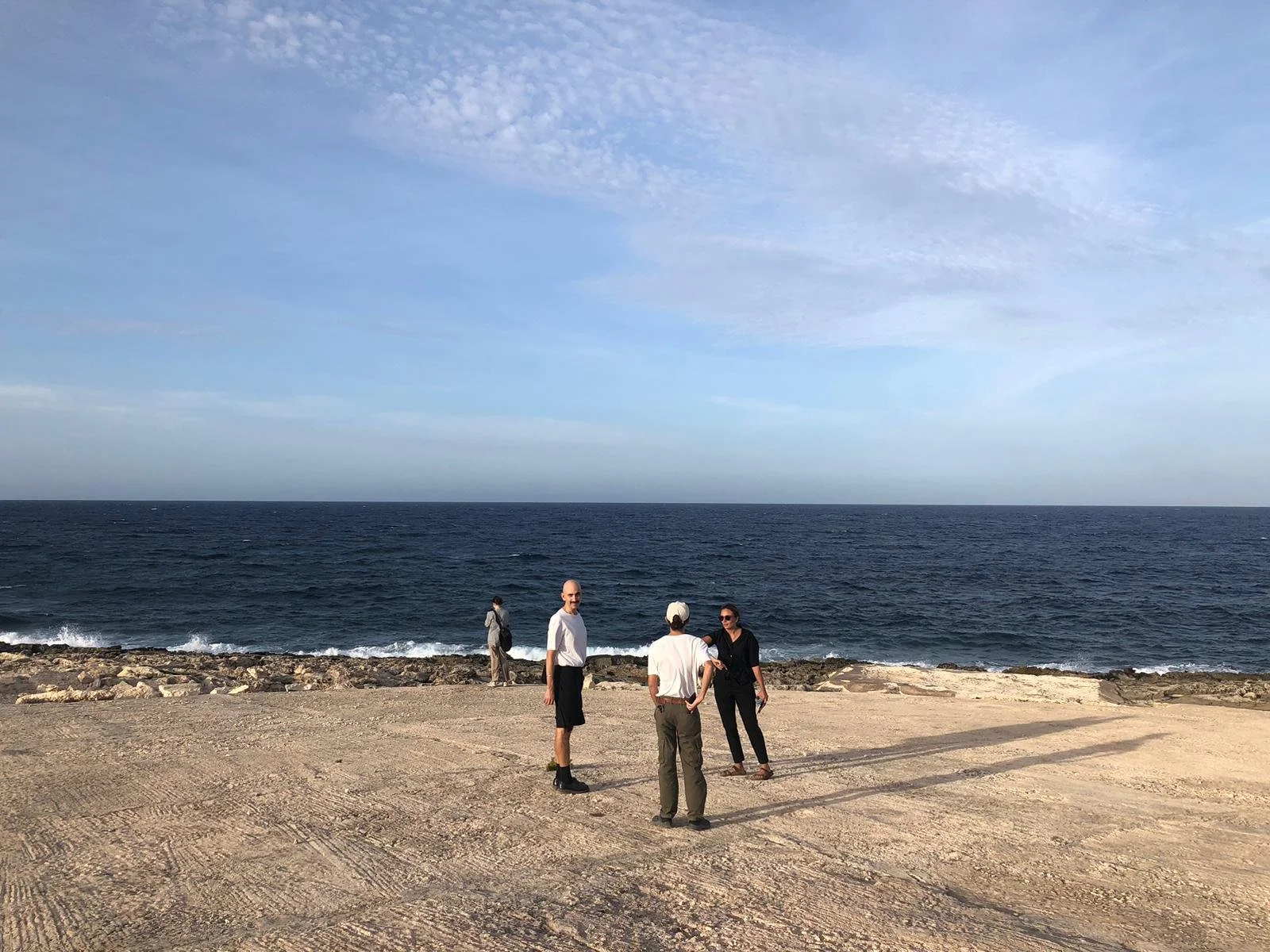MagiC Carpets
Beyond What Drifts Us Apart
Mahalla Festival
Beyond What Drifts Us Apart (BWDUA), is a multi-year research project uncovering the less dominant narratives of the environments surrounding historic coastal towers in the Maltese Islands. As colonial legacies have dispersed over time, the relevance of these coastal towers beyond their cultural significance has faded. Aside from challenging the colonial histories associated with these sites of cultural significance, BWDUA aims to initiate investigations and understand the consequent relationships developed/developing between their surrounding impacted landscapes and non-human communities. Employing decolonial and post-anthropocentric perspectives, BWDUA acknowledges the exploitation of natural systems leading to a climate collapse and an overabundance of technological systems. It reconsiders the dichotomies between the visible and the invisible, addressing new materialisms, extractive capitalism and contestation of seemingly untouched landscapes.
2024
Residency Dates
24 June - 24 July
Exhibition Dates
20 - 28 July
The four-week residency resulted in the co-creation of works about the untold, overlooked, unheard and unseen stories of Dwejra in San Lawrenz. The creative team became voices, ears, advocates, collaborators and speculators sharing a space with the nonhuman, intervening sensitively. At Dwejra, BWDUA attempted to understand and look closer at the natural environment surrounding the tower by investigating aspects related to the geology, ecology and astronomy of the area. Protected as a dark sky area and a Natura 2000 site, Dwejra offers multiple layers and complexities for investigation. The tower at Dwejra also had a dual observatory function, guarding both the coast and the fungus rock in Dwejra Bay.
The shearwaters and the bats inhabiting the area, the Posidonia Oceanica protecting our environment from under the water, the varying degrees of native and alien species, its dark sky, the embedded fossils within rock formations and the unique characteristics of the fungus rock were initially outlined as the main curatorial thematics guiding the research-based artistic process. Each of the artists were asked to investigate unique and specific elements based on their interests, artistic practice and previous work.
Jamie Barbara amplifies the voices of bats which live and interact with the tower and its surroundings. For Falling on Deaf Ears, he documented their inaudible frequencies, translating them to a site-specific installation. Both Jamie and Keit Bonnici encourage stillness and anti-interventionist approaches, urging fellow humans to take a step back. Keit Bonnici’s work focuses on the Fungus Rock, Dwejra Bay and its surroundings, including the tower, challenging the geo-/eco-political and encouraging stillness. His work, Rest Island, comprises sculptural and performance-based elements linking the area to the bumerin (Mediterranean monk seal), due to the positioning of the Bumerin Cave in Dwejra Bay, overlapping it with the inherent characteristics of the Fungus Rock. Invisible from the Dwejra Tower, yet a major protagonist in the protection of our shores even before coastal defence systems were in place, is the Posidonia Oceanica - sea grass. In Ghalik, Posidonia!, Florinda Camilleri overlaps contemporary movement with traditional Gozitan dance, in a performative work which symbolically shows gratitude to this non-human species protecting the Dwejra coastline from beneath. Martinha Maia personifies the tower and its surroundings interpreting them as Sansuna, a mythical Gozitan woman symbolising fertility and remarkable strength. This parallels the strength of the native species which inhabit the environment surrounding the tower, alongside the structure of the tower itself. Furthermore, Martinha further emphasises detracting forces through the personification of invasive and alien species, their presence maximised through functionality and sustainability. On the other hand, in Look Up!, Justyna Olszewska parallels the tower as a coastal observation point with Ggantija Temples, known to be the oldest observation point for the skies on the island of Gozo. Her work highlights the degree of light pollution through human action across the skies of Dwejra, notwithstanding it being a Dark Sky Protected Area. Using the surrounding rock formations and the presence of a significant number of fossils within the rock as a departure point, in Lithomorph, Issac Warrington explores the cyclicality of decomposition and recomposition and overlaps this with human impact.
BWDUA at Dwejra extended beyond the core team to include several communities. Several individuals, organisations, initiatives and entities have facilitated the development of the projects through the sharing of information and research, exchange of ideas, participation in workshops and even through direct collaboration and co-creation of the works.
BWDUA, in general, is guided by the belief of giving agency to beyond-human communities through co-created artistic interventions and thus garnering an understanding of their validity in the understanding of the impacts of colonisation and beyond, to pave the way for the safeguarding of socio-environmental and cultural heritage aspects of threatened landscapes.
Exhibition Opening Hours
Saturday 20 July | 10am - 1pm & 4pm - 8pm
Sunday 21 July | 10am - 1pm & 4pm - 8pm
Tue 23 July | 10am - 1pm
Wed 24 July | 4pm - 8pm
Thurs 25 July | 10am - 1pm
Fri 26 July | 4pm - 8pm
Saturday 27 July | 10am - 1pm & 4pm - 8pm
Sunday 28 July | 10am - 1pm & 4pm - 8pm
View the full programme here
Beyond What Drifts Us Apart is a collaboration with the Istanbul-based Mahalla Festival organised by the cultural organisation Diyalog, including site-specific artistic interventions, artists residencies and community-oriented activities.
Beyond What Drifts Us Apart is part of the MagiC Carpets Platform, co-funded by the European Union’s Creative Europe program. The MagiC Carpets Platform brings together 21 European cultural organisations, coordinated by Kaunas Biennial in Lithuania, offering opportunities for emerging artists to explore little-known areas and to create - together with local communities - new works that bring to light regional particularities and traditions.
Credits
Emerging Curator: Elyse Tonna
Artistic Director & Advisor: Sabine Küper-Büsch
Participating Artists, Malta 2024: Keit Bonnici (MT), Maia Martinha (PT), Jamie Barbara (MT), Justyna Olszewska (PL), Florinda Camilleri (MT), Isaac Warrington (MT)
Guests: Geġwiġija
Lead Partner: Kaunas Biennale
Key Collaborator: Diyalog Istanbul
Co-funded by: European Union’s Creative Europe programme, and Arts Council Malta.
Collaborators in Malta & Gozo: Din l-Art Ħelwa and the volunteers, San Lawrenz Local Council, Dwejra Marine Environment Centre, Ta’ Ċangura Folk Group, Noel Formosa, Alda Bugeja, Ric Smith, Gozo Bat Initiative, ERA, Annie Formosa, Santa Marija Band Club in Iż-Żebbuġ, the fisher community, Victor Agius, Luke Caruana, Sarah Schembri Warr, Simon Wallace, Rakel Vella, Rosanne Zerafa, DOC Studio, Daniela Debattista, Ray Dingli, Cláudia Melo, Paulina Brelińska-Garsztka, Martina Spiteri, Reuben Grima, Sven Bonnici, Francesco Grech and the workshop participants
The Artists
Florinda Camilleri (MT)
Florinda is a community pharmacist and dance artist from and based in Malta. She currently works as a managing pharmacist of a dynamic pharmacy and its associated medical clinics in the centre of Malta, while her artistic practice flows at a slower, gentler pace.
She engages in dance-and performance- related projects, taking on various roles as a contemporary dance and screendance performer and maker, researcher, coach and producer. Florinda also enjoys designing, building, and holding spaces for creativity to emerge, be it her professional or personal life. She is particularly interested in how public space feels, and can feel, and searches for unusual ways of engaging with public space(s) through sensorial and affective information.
Posthuman feminist notions of response-ability and care are fundamental to both her practices as an artist and pharmacist.
Justyna Olszewska (PL)
Justyna Olszewska - graduate of the Academy of Fine Arts in Poznań and Astronomy at Adam Mickiewicz University (AMU), now a student at the Doctoral School of Exact Sciences at AMU in the field of astronomy. She conducts astro-workshops and lectures, creating works that address ecological themes. Currently, her artistic work focuses on projects aimed at highlighting the growing issue of sky pollution caused by artificial light, and consequently, the loss of the natural heritage of a starry sky. Together with three friends, she forms the educational collective Good Night.
Isaac Warrington (MT)
Isaac Warrington, an artist and art educator, obtained a Bachelor’s degree in Fine Art at MCAST and further pursued advanced studies in philosophy, psychology and environmental science. He is currently carrying out a postgraduate degree in Art Education at the University of Malta.
In his artistic practice, Warrington looks to Ontology (the branch of metaphysics dealing with the nature of being) and Phenomenology (an approach that concentrates on the relationship between consciousness and the objects of direct experience) as starting points for most of his works. He also adopts a Socratic attitude in relation to how humans interact with the world around them and with each other, particularly with regards to the Maltese context.
Geġwiġija (MT)
Geġwiġija is a pop-up library collectively exploring ecology, queerness & decolonisation. As a DIY space for stumbling upon ideas, we collaborate with different groups to share our selection of books at events every two months. Alongside the books, artists and creatives are invited to share their work, connecting the ideas between the pages to local lives and debates. In the spirit of linking theory to practice, we also co-host workshops to encourage the sharing of skills and ideas.
Martinha Maia (PT)
Martinha Maia is a Portuguese visual artist, She works with different media, including drawing, installation, and performance. Her work has been presented within numerous exhibitions.
Her work has been presented: Entre Espaços, ANOZERO’24 Bienal de Coimbra, Museu Machado Castro, 2024; Cores vistas de dentro para fora at Fundação Gramaxo in 2024; Festival Iminente 2022; the International Linen Biennial of Portneuf in Quebec, Canada, 2021; Studiolo XXI Desenho e Afinidades at Fundação Eugénio de Almeida in Évora, 2019; Da Fábrica que desvanece à baía do Tejo at Parque Empresarial Baía do Tejo (Quimiparque), 2014; and 30 years of CAM, Performance Cycles at CAM in 2013.
Solo and group exhibitions have taken place at: Boca do Corpo, Sput&nik the Window, Oporto, 2024; Nas entrelinhas do pixel, Mupi Gallery, Oporto, 2024; Anatemnõ at Casa-Museu Abel Salazar, Oporto, 2022; Coleópteros at the Museu Nacional Soares dos Reis, Oporto, 2019.
Jamie Barbara,
Jamie Barbara, also known as Naqara, is an electronic musician, sound artist and composer from Malta.
With a keen interest in exploring the mystery of the ear, Jamie seeks to create work that resonates on a profound level, connecting with listeners through his technical approach and emotive soundscapes.
Despite his complete disassociation with the term ‘artist’, he remains humbly persistent, recognising that there is always more to discover and transmit.
Keit Bonnici (MT)
Keit Bonnici is a transdisciplinary artist and designer, who has studied and lived in Malta, London and Vienna. His conceptually-driven and practice-based research is embedded in speculative thinking and an assemblage of designing objects, interventions and narratives that question the social, political and cultural territories of space. Keit investigates the production and consumption of spatial domains positioning the work within surreal materialisation and radical situational insertions.
MagiC Carpets
Beyond What Drifts Us Apart
Mahalla Festival 2023
An interdisciplinary, site-specific project developed and curated by Elyse Tonna. The multi-year research-based project attempts to uncover the less dominant narratives associated with the environments surrounding historic coastal towers and the consequent relationships between the impacted landscapes and non-human communities. In 2023, the project centres within and around the Qalet Marku Tower and peninsula in Baħar ic-Cagħaq (Naxxar) in Malta. Artists have been invited to develop reactionary works in response to the site and a curatorial framework which overlaps aspects related to ecological thinking, frontiers and post-fossil fuel narratives.
The research questions used as departure points for this project are:
What marginalised ecological narratives are embedded within these structures? How have they inflicted upon natural landscapes and beyond-human communities?
Approached from decolonial and post-anthropocentric perspectives, the project aims to investigate the intersections among climate justice, territorial defence and bio-cultural diversity preservation. It reconsiders the contrasts between the more visible and the invisible, raising aspects related to identity, extractive capitalism and contestation of landscapes.
Contextually, the focus of the project moves away from typical locations for artistic interventions, and shifts attention towards the peripheries, seeing opportunities in making use of sites of historic and ecological importance, with the aim of transmitting non-linear narratives. By embracing the ecotone of these in-between zones through an understanding of the implications on natural landscapes and non-human communities, the artists facilitate development of new relationships between geographical, geological and ecological factors.
Beyond What Drifts Us Apart | opening weekend
Saturday 25 November
11:00 | Threading an (Un)safe Plot - Fernando P Ferreira
12:00 | toe ear - Marija Rasa Kudabaite
13:00 | Sedimentcorpi Qalet Marku- Alfred Graf
14:00 | Be Careful(l) - Charlene Galea
16:30 | Factuals for Future (FaFu) [at Baħar iċ-Ċagħaq Church, Santa Marija tal-Anġli]
Sunday 26 November
11:00 | Beyond What Drifts Us Apart (Site) Tour
12:00 | toe ear- Marija Rasa Kudabaite
14:00 | Be Careful(l) - Charlene Galea
Beyond What Drifts Us Apart | second weekend
Saturday 2 December
12:00 | Beyond What Drifts Us Apart (Site) Tour
14:00 | tune in; solarpunk manifesto - Samuel Ciantar & Noah Fabri
Sunday 3 December
13:00 | Be Careful(l) - Charlene Galea
14:00 | Te fit-Tazza u Kelmtejn - Geġwiġija
Beyond What Drifts Us Apart | final weekend
Saturday 9 December
11:00 - 16:00
More info coming soon
Sunday 10 December
11:00 - 16:00
More info coming soon
*** Have a look at the site map here ***
Beyond What Drifts Us Apart is a collaboration with the Istanbul-based Mahalla Festival organised by the cultural organisation Diyalog, including site-specific artistic interventions, artists residencies and community-oriented activities.
Beyond What Drifts Us Apart is part of the MagiC Carpets Platform, co-funded by the European Union’s Creative Europe program. The MagiC Carpets Platform brings together 21 European cultural organisations, coordinated by Kaunas Biennial in Lithuania, offering opportunities for emerging artists to explore little-known areas and to create - together with local communities - new works that bring to light regional particularities and traditions.
Credits
Emerging Curator: Elyse Tonna
Artistic Director & Advisor: Sabine Küper-Büsch
Participating Artists, Malta 2023: Samuel Ciantar (MT), Fernando P Ferreira (PT), Charlene Galea (MT), Alfred Graf (AT), Marija Rasa Kudabaite (LT), Rakel Vella (MT)
Guests: Geġwiġija
Lead Partner: Kaunas Biennale
Key Collaborator: Diyalog Istanbul
Co-funded by: European Union’s Creative Europe programme, Arts Council Malta, and the Federal Ministry for Arts, Culture, the Civil Service and Sport of the Republic of Austria.
Collaborator in Malta: Din l-Art Ħelwa
Health & Safety: JP Health and Safety Consultants
Thanks: to Baħar iċ-Ċagħaq Church, Santa Marija tal-Anġli, Malta Rangers Unit, and Naxxar Local Council for their support.
The Artists
Samuel Ciantar (MT)
Samuel Ciantar is an emerging artist with an academic background in architecture. His artistic practice is concerned with alternative ways of being and interacting with our environment, drawing insight from the relationship between humans, objects and spaces.
Alfred Graf (AT)
Alfred Graf is a graduate of the Art Academy in Vienna. Special sediments or colored stones, unusual river courses or the like mix with strands of memory and phases of interpretation in Alfred Graf's works. Beginning with research and long walks, and later extracting elements from the landscape in the form of rocks and sand, his work sees him create in the studio (sediment paintings) as much as in the landscape as sculpture (sediment corps).
Rakel Vella (MT)
Rakel Vella’s main interest lies in merging the physical and virtual spaces in her work. Her research focused on modern surveillance in contemporary society followed by an interactive sculpture at the intersection of physical and virtual realms.
Influenced by physical and natural surroundings, Rakel combines fundamental design elements with technological media, such as video, 3D sculpture and computer-generated art.
Geġwiġija (MT)
Geġwiġija is a pop-up library collectively exploring ecology, queerness & decolonisation. As a DIY space for stumbling upon ideas, we collaborate with different groups to share our selection of books at events every two months. Alongside the books, artists and creatives are invited to share their work, connecting the ideas between the pages to local lives and debates. In the spirit of linking theory to practice, we also co-host workshops to encourage the sharing of skills and ideas.
Fernando P Ferreira (PT)
Fernando P. Ferreira is an architect, artist and creative researcher based between Porto (Portugal) and London (UK). His practice interacts with activism, art and urban research, textile making, storytelling, and experimental practices.
Marija Rasa Kudabaite (LT)
Marija Rasa Kudabaite explores in her practice sonic spatialization, texture, and fragility. she has been working on a series of acousmatic pieces for multichannel speaker setups. She carefully sculpts fictional soundscapes out of delicate noise, electronic sounds, and field recordings of quiet places, attentively put together by using a micro montage approach.
Charlene Galea (MT)
Charlene Galea is a conceptual artist whose body often navigates between online identity and physical experiences. Concepts are mostly presented through performance and text-based artworks, in which clothes and movement act as a metaphor to narrate how the body is experienced within contemporary times - focusing on the female identity, the effect of the media and its communication, issues or harmony of space as well as those of human relations.
FaFu
FaFu (Factuals for Future) is a film-making working group around biodiversity under threat and Initiatives for its protection in Malta. A group of Malta-based filmmakers work around the central importance of biodiversity and community-related projects to protect the environment.
With Leanne and Lorraine Lewis, Sandra Mifsud and Douglas Comley, Laura Piredda and Martina Vasallo . Developed by Sabine and Thomas Büsch.
The Curator
Elyse Tonna (MT)
Elyse Tonna is a curator, creative director, architect and researcher. Her practice spans various disciplines including visual arts, architecture, design, cultural policy, placemaking and cultural heritage. Currently, her curatorial research interests relate to ecological thinking, the post-/Anthropocene, speculative futures, living heritage and threatened landscapes. She overlaps these with spatial awareness and sensibility to create site/context-specific, immersive and sensorial experiences.
Our Collaborators
Diyalog
The Istanbul-based culture initiative Diyalog deals with bilateral and multilateral art and culture projects that revolve around current cultural-political issues and serve to promote international understanding. Since 2014, Diyalog, in cooperation with various partners, has been designing educational programs and events that deal with international migration movements, their causes and consequences, democratization processes and sustainability, and the development of innovative digital formats of cultural mediation, but also take environmental issues such as biodiversity into account.
Din l-Art Ħelwa
Din l-Art Ħelwa was set up in 1965 to safeguard Malta’s cultural heritage and the natural environment for future generations, which includes the hands-on conservation and restoration of our built and natural heritage.
It currently has guardianship of some 20 properties, half of which are open on a regular basis, and also has a very active sub-committee which checks on all planning applications and objects formally when these go against planning policies.
